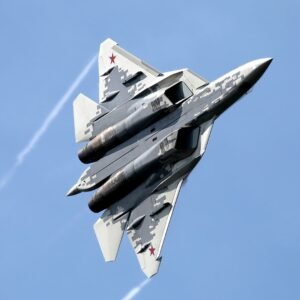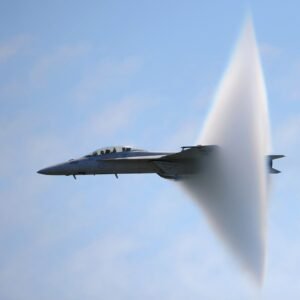Introduction
The JAS 39 Gripen fighter jet is a product of Saab, a Swedish aerospace and defense company. Saab began developing the Gripen in the 1970s as a replacement for Sweden's aging fleet of fighter jets. The first Gripen prototype flew in 1988, and the aircraft entered service with the Swedish Air Force in 1996.

Since then, the Gripen has been exported to several other countries, including the Czech Republic, Hungary, South Africa, and Thailand. Saab has continued to develop and update the Gripen, with the latest variant being the Gripen E/F, which features updated avionics, weapons systems, and other improvements over earlier versions.
Design and Development The JAS 39 Gripen Fighter Jet
The JAS 39 Gripen fighter jet can be traced back to the early 1970s when the Swedish government began exploring options for a new fighter to replace the aging Saab 35 Draken and Saab 37 Viggen jets. The new fighter was to be capable of performing air defense, ground attack, and reconnaissance missions.

Saab began work on the Gripen project in 1979, with the aim of creating an aircraft that was smaller, more agile, and less expensive than the Viggen. The company also sought to incorporate advanced technology, such as a fly-by-wire flight control system, into the new fighter.
The first Gripen prototype, known as the Gripen Technology Demonstrator, made its maiden flight on December 9, 1988. This was followed by the first production Gripen, which entered service with the Swedish Air Force in 1996.
Since then, Saab has continued to develop and update the Gripen, with the aim of keeping it competitive with other modern fighters. Some of the key improvements made to the Gripen over the years include the addition of new sensors and avionics, such as the Raven ES-05 AESA radar, and the integration of new weapons systems, such as the Meteor air-to-air missile.
Saab has also worked to reduce the operating costs of the Gripen, with features such as modular design, easy maintenance, and a high degree of commonality between different variants of the aircraft.
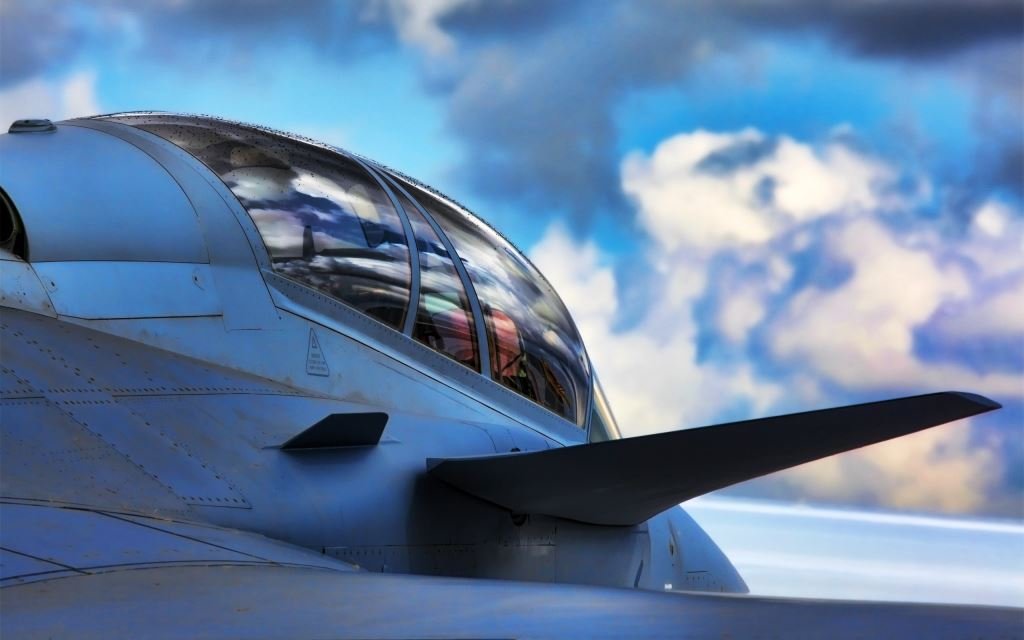

General Specification of The JAS 39 Gripen Fighter Jet
| Specification | Details |
| Length | 14.1 m (46 ft 3 in) |
| Wingspan | 8.4 m (27 ft 7 in) |
| Height | 4.5 m (14 ft 9 in) |
| Empty weight | 6,800 kg (15,000 lb) |
| Maximum takeoff weight | 16,500 kg (36,400 lb) |
| Powerplant | 1 × Volvo RM12 afterburning turbofan engine |
| Thrust | 80 kN (18,000 lbf) with afterburner |
| Maximum speed | Mach 2 (2,470 km/h or 1,535 mph) |
| Range | 3,200 km (2,000 mi) with external fuel tanks |
| Service ceiling | 15,240 m (50,000 ft) |
| Crew | 1 or 2 |
Avionics and Armaments
The JAS 39 Gripen fighter jet is equipped with a range of advanced avionics and armament systems that enable it to perform a wide variety of missions. Here are some details on the avionics and armaments of the Gripen:
JAS 39 Gripen Fighter Jet:- Avionics
- Raven ES-05 AESA radar, which provides long-range air-to-air and air-to-ground targeting capabilities, and features electronic counter-countermeasures (ECCM) to enhance survivability
- IRST (Infrared Search and Track) sensor, which allows the aircraft to detect and track targets using their heat signature
- Electronic Warfare (EW) suite, which includes sensors and jammers to detect and counter enemy radars and other electronic threats
- GPS/INS (Global Positioning System/Inertial Navigation System), which provides accurate navigation and targeting information
- Helmet-mounted display (HMD), which allows the pilot to target weapons and sensors simply by looking at them
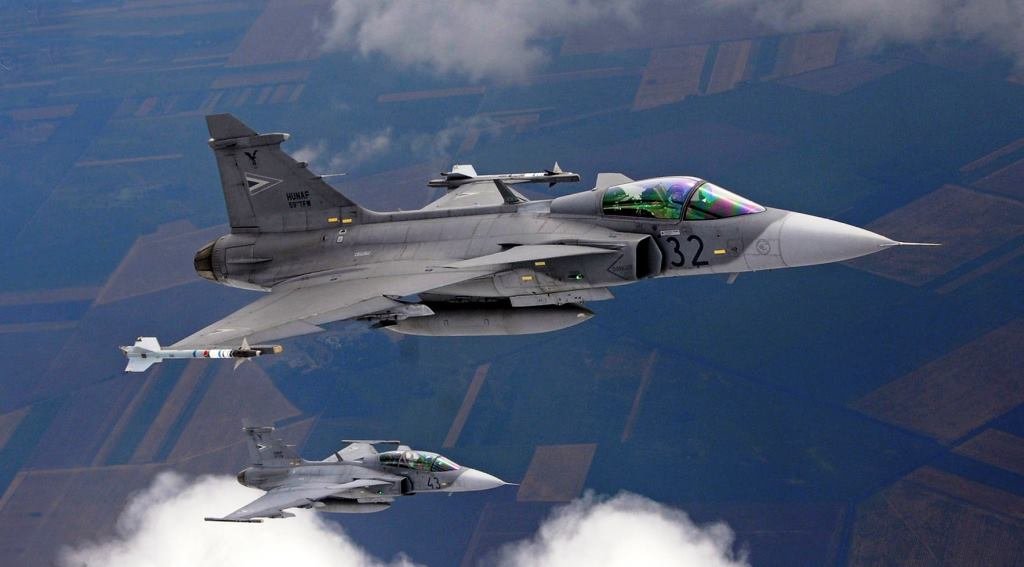
JAS 39 Gripen Fighter Jet:- Armament
- 27 mm Mauser BK-27 cannon, which can fire up to 150 rounds per second and has a range of up to 3 km
- Air-to-air missiles, such as the AIM-120 AMRAAM and the Meteor, can engage enemy aircraft at long ranges with high accuracy
- Air-to-ground missiles, such as the AGM-65 Maverick and the Brimstone, can strike ground targets with precision
- Unguided rockets and bombs, such as the Hydra 70 and the Paveway series, provide a wide range of options for striking ground targets
- The specific armament options for the Gripen can vary depending on the configuration and mission requirements, and the aircraft can carry a mix of air-to-air and air-to-ground weapons simultaneously.
Features and Capabilities
The JAS 39 Gripen fighter jet is known for its advanced features and capabilities, which enable it to perform a wide range of missions with high effectiveness. Here are some of the key features and capabilities of the Gripen:
- Multi-role capabilities: The Gripen is designed to perform air defense, ground attack, and reconnaissance missions, making it a versatile aircraft that can adapt to different operational requirements.
- Fly-by-wire flight control system: The Gripen features a digital fly-by-wire flight control system, which allows for precise and responsive control of the aircraft. This system also provides stability and maneuverability enhancements, as well as automatic recovery from certain flight regimes.
- Short takeoff and landing (STOL) capability: The Gripen can operate from short runways and semi-prepared surfaces, making it suitable for use in austere environments.
- Low operating costs: The Gripen is designed with a focus on reducing operating costs, through features such as modular design, easy maintenance, and high commonality between different variants.
- Advanced avionics: The Gripen features advanced avionics, such as the Raven ES-05 AESA radar, which provides long-range detection and targeting capabilities, as well as electronic counter-countermeasures (ECCM) to enhance survivability.
- High-performance engines: The Gripen is powered by a Volvo RM12 after-burning turbofan engine, which provides high thrust and speed, as well as good fuel efficiency.
- Advanced weapons systems: The Gripen is equipped with a range of advanced weapons systems, including air-to-air missiles, air-to-ground missiles, bombs, and rockets, which provide a high degree of flexibility and effectiveness in combat.
- Network-centric capabilities: The Gripen can be integrated into network-centric operations, enabling it to share information and coordinate with other aircraft and ground forces in real time.
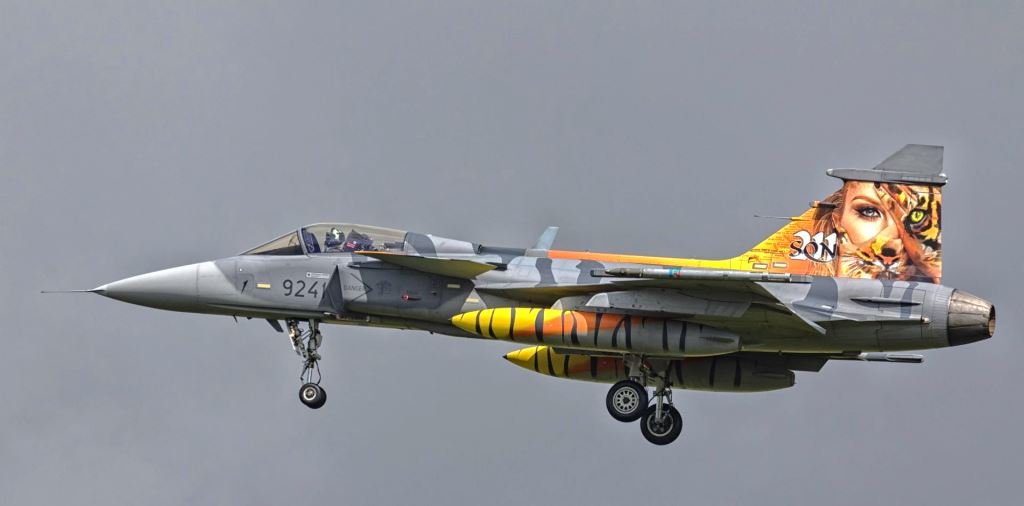
Prototypes and Variants
The JAS 39 Gripen fighter jet has gone through several prototypes and variants since its inception in the 1980s. Here are some of the key prototypes and variants of the Gripen:
- Gripen Demonstrator: The first Gripen prototype, the Gripen Demonstrator, flew for the first time in 1988. It was used to validate the design and technology concepts of the Gripen and was equipped with the RM12 engine and a basic avionics suite.
- Gripen JAS 39A/B: The Gripen JAS 39A/B variant was the first production version of the Gripen, and entered service with the Swedish Air Force in 1996. It featured improvements in avionics and armament over the Gripen Demonstrator, as well as improved engine performance.
- Gripen JAS 39C/D: The Gripen JAS 39C/D variant was introduced in the early 2000s, and features a more powerful engine, improved avionics, and a larger weapon load than the JAS 39A/B. It is also equipped with a retractable in-flight refueling probe, allowing it to extend its range and endurance.
- Gripen E/F: The Gripen E/F variant, also known as the Gripen NG (Next Generation), is the latest and most advanced variant of the Gripen. It features a new avionics suite, including the Raven ES-05 AESA radar and a new electronic warfare system, as well as a new engine and other enhancements. The Gripen E/F also has a larger airframe, allowing for more fuel and weapons, and can be equipped with a new long-range air-to-air missile, the Meteor.
- Gripen Aggressor: The Gripen Aggressor is a specialized variant of the Gripen designed for adversary training and other types of air combat training. It is equipped with advanced sensors and datalinks to simulate enemy aircraft, as well as an advanced EW suite to simulate enemy jamming and other electronic threats.

SAAB JAS 39 Gripen Fighter Jet Service History
The JAS 39 Gripen fighter jet has seen action in several conflicts and missions around the world. Here are some examples of its war history:
- Libya: As part of NATO’s Operation Unified Protector, the Swedish Air Force dispatched eight Gripen fighters to Libya in 2011. The Gripen’s primary involvement in the operation was air-to-ground attacks, and they participated in several successful strikes against ground targets.
- Afghanistan: The Swedish Air Force has deployed Gripen fighters to Afghanistan as part of the International Security Assistance Force (ISAF). The Gripen’s mission in Afghanistan has been primarily focused on providing air support to ground forces, as well as performing reconnaissance and surveillance missions.
- Baltic Air Policing: The Gripen has been used extensively in the Baltic Air Policing mission, which is a NATO air defense mission to protect the airspace of the Baltic states. Gripen fighters from several different countries have participated in the mission, including Sweden, the Czech Republic, and Hungary.
- Brazil: The Brazilian Air Force operates a fleet of Gripen fighters, which they have used in several training exercises and military exercises. The Gripen is also expected to play a key role in Brazil’s air defense capabilities in the coming years.
Read More:- Sukhoi Su-57 Fighter Jet and Chengdu J-20 Fighter Jet.










